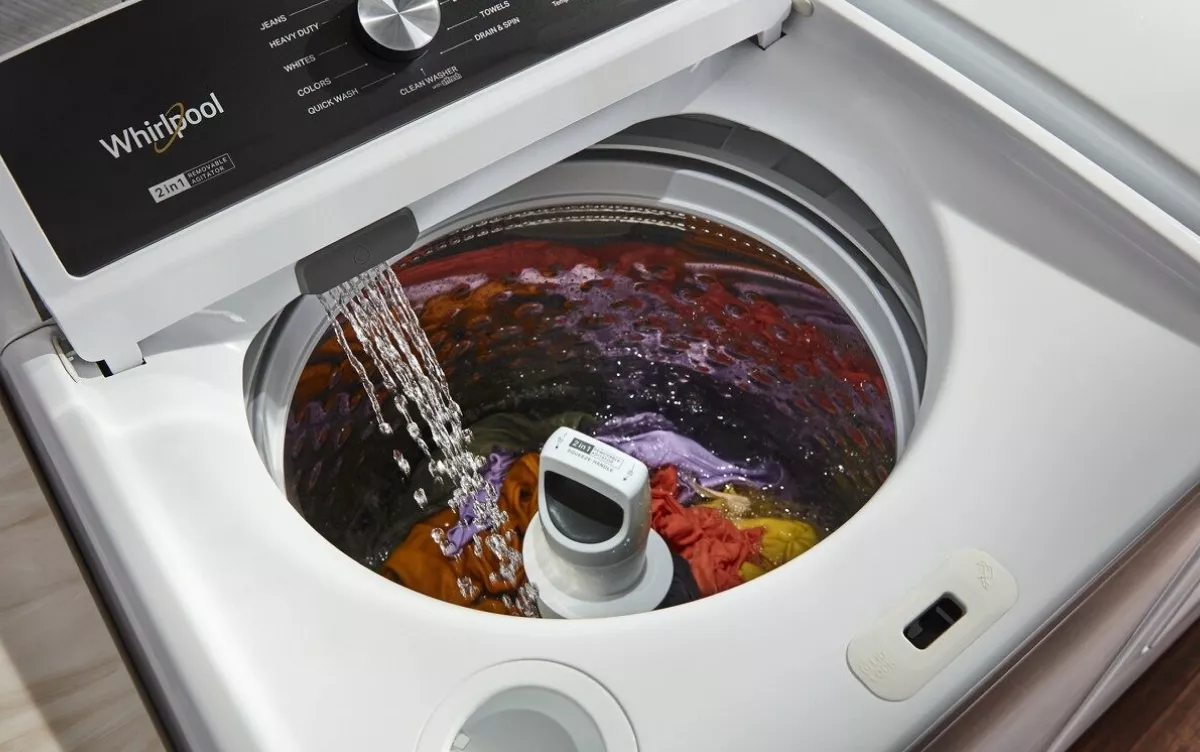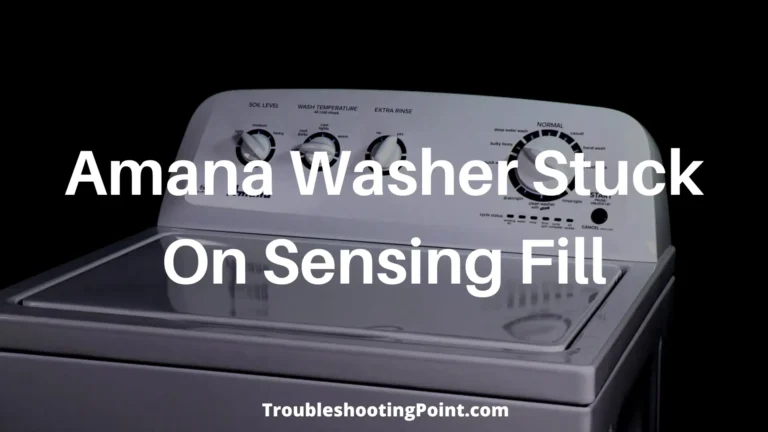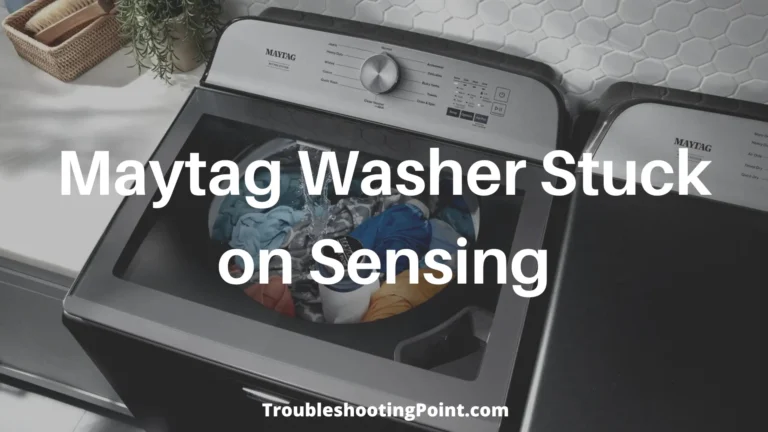Are you troubled by your Whirlpool washer leaking from the bottom? Whether it’s a perplexing leak during the spin cycle, a Whirlpool Cabrio washer mysteriously dripping, or you’re wondering, “Why is my Whirlpool top load washer leaking from the bottom?”, you’re not alone.
This common issue can be a source of frustration and urgency, especially when it disrupts your laundry routine. Our comprehensive guide is designed to demystify these leaks, exploring the various reasons behind a Whirlpool washer, especially the Cabrio model, leaking from the bottom. We aim to provide practical solutions to restore your appliance’s functionality swiftly and efficiently.
Why Is My Whirlpool Top Load Washer Leaking From the Bottom?
Experiencing a Whirlpool washer leaking from the bottom can be a nuisance, and identifying the root cause is crucial for an effective fix. Here’s a breakdown of the most common reasons and Whirpool washer error codes behind these leaks:
1. Loose or Damaged Drain Hose
A frequent culprit for a Whirlpool washer, particularly during the spin cycle, is a loose or damaged drain hose. This issue is prevalent in both the Whirlpool Cabrio and top load models. The intense movement during spinning can exacerbate any existing flaws in the hose, leading to leaks.
2. Clogged or Dirty Drain Pump Filter
Another common reason for a Whirlpool washer leaking from the bottom is a clogged drain pump filter. Debris accumulation over time can obstruct water flow, resulting in leaks during operation. Regular cleaning of the filter is essential to prevent this issue.
3. Uneven Washer Leveling
An unevenly leveled washer, especially in top load models, can lead to leaks from the bottom. Imbalance during cycles causes water to pool and escape in unintended ways. Ensuring that your washer is properly leveled can mitigate this risk.
4. Faulty or Clogged Drain Pump
A defective drain pump is a significant concern, particularly in the Whirlpool Cabrio model. If the pump fails to effectively expel water, it can result in leaks during various stages of the washing cycle.
5. Worn or Damaged Door Seal
Leaks can also occur due to a compromised door seal. In front load Whirlpool washers, a damaged seal can allow water to escape, particularly during high-pressure cycles like spinning.
6. Loose Connections and Faulty Tub Seal
Loose hose connections or a faulty tub seal can result in unexpected leaks. These issues, while less common, are crucial to inspect, especially in Whirlpool top load washers.
7. Overloading the Washer
Overloading your Whirlpool washer can also cause leaks. Excess laundry can create pressure and displacement, leading to water leaking from the bottom during cycles.
8. Defective Water Inlet Valve
Lastly, a defective water inlet valve can lead to leaks. This is often observed in Whirlpool Cabrio washers, where the valve fails to regulate the water flow correctly.
DIY Solutions for Whirlpool Washer Leaking From Bottom

When faced with a Whirlpool washer leaking from the bottom, there are several DIY strategies you can employ to resolve the issue. Here’s how to tackle each problem:
1. Inspecting and Repairing the Drain Hose
- Check for Damage: Inspect the drain hose for any signs of wear, tear, or kinks, especially if your washer is leaking during the spin cycle.
- Secure Connections: Ensure the hose is securely attached to the washer and the drainage system. Tighten any loose connections.
- Replace if Necessary: If the hose is damaged, consider replacing it to prevent future leaks.
2. Cleaning the Drain Pump Filter
- Locate the Filter: Find the drain pump filter, typically located at the front lower panel of the washer.
- Remove and Clean: Carefully remove the filter and rinse it under running water to remove any debris.
- Reinstall: Once cleaned, reinstall the filter, ensuring it’s properly secured.
3. Leveling the Washer
- Check Level: Use a spirit level to check if your washer is balanced. An unlevel washer can cause leaks.
- Adjust the Feet: Adjust the leveling feet at the bottom of your washer until it is completely level.
4. Checking and Replacing the Door Seal
- Inspect the Seal: Look for any tears, wear, or loose areas in the door seal, particularly in front load washers.
- Clean the Seal: Regularly clean the seal to prevent debris accumulation that could cause leaks.
- Replace if Damaged: If the seal is damaged, replace it to ensure a watertight closure.
5. Tightening Loose Connections and Inspecting the Tub Seal
- Examine All Connections: Check all hose connections for tightness, especially in top load models.
- Inspect the Tub Seal: Look for signs of wear or damage in the tub seal and replace it if necessary.
6. Avoiding Overloading
- Load Appropriately: Avoid overloading the washer. Follow the manufacturer’s guidelines for load size.
- Even Distribution: Ensure clothes are evenly distributed to avoid imbalance during the spin cycle.
7. Replacing the Water Inlet Valve
- Identify Valve Issues: Look for signs of leakage or malfunction in the water inlet valve.
- Purchase Replacement: Obtain an appropriate replacement valve, preferably an OEM part.
- Install New Valve: Replace the old valve with the new one, following proper installation procedures.
Each of these solutions is designed to address specific causes of leaks in various Whirlpool washer models, including the Whirlpool Cabrio and top load washers. Implementing these steps can help resolve leaking issues and extend the life of your appliance.
Conclusion
In conclusion, addressing a Whirlpool washer leaking from the bottom involves diagnosing and resolving various potential issues, from damaged door seals to clogged filters. Whether you own a Whirlpool Cabrio or a top load model, these DIY solutions can effectively remedy leaks, ensuring your washer operates efficiently.
Remember, regular maintenance and prompt attention to these issues can greatly extend the lifespan of your appliance. However, if leaks persist, consulting a professional technician is recommended to safeguard the functionality and longevity of your Whirlpool washer.
Read More:
![[Fixed] Whirlpool Washer Not Spinning Clothes Dry](https://troubleshootingpoint.com/wp-content/uploads/2023/07/Whirlpool-Washer-Not-Spinning-Clothes-Dry-768x432.webp)

![Lg Washer Stuck on Load Sensing [Fixed]](https://troubleshootingpoint.com/wp-content/uploads/2024/02/Lg-Washer-Stuck-on-Load-Sensing-768x432.jpg)
![GE Washer Front Load Crimson Stuck on Load Sense [Fixed]](https://troubleshootingpoint.com/wp-content/uploads/2024/01/GE-Washer-Front-Load-Crimson-Stuck-on-Load-Sense-768x432.jpg)


